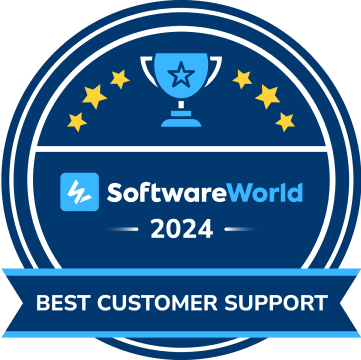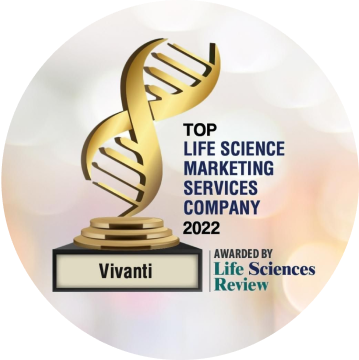Breaking the Bottleneck: Structural Barriers in Regulatory Submissions

Regulatory submissions remain one of the most crucial (and complex) pillars of pharmaceutical development. In an industry where time quite literally equals money, submission delays are rarely caused by scientific ambiguity. More often, they stem from within - by administrative friction, structural silos, and fragmented systems that prevent regulatory teams from operating at full effectiveness.
Disconnected tools. Buried document versions. Comments left in inboxes rather than tracked in review systems. These inefficiencies carry real consequences. A single day’s delay in regulatory approval can cost up to US$500,000 (approx. £377,800) in lost revenue1. At the same time, an estimated $60–110 billion in potential annual value could be unlocked in the pharmaceutical sector through generative AI - much of it linked to faster development and regulatory approval processes2.
Despite this, many pharmaceutical companies remain reliant on manual, disjointed processes. The core issue is rarely the task at hand - it’s the system that surrounds it. Regulatory professionals aren’t lacking in expertise; they’re navigating processes that are misaligned, unclear, and often invisible to each other.
The Silo Problem
The persistence of data silos is one of the industry’s most well-documented challenges. Nearly half of pharmaceutical companies report that data silos negatively impact operational efficiency, and 53% of large pharma companies say silos hinder internal collaboration3. This fragmentation doesn’t just slow progress - it impairs cross-functional coordination and strategic alignment during critical phases of development.
Poor data management also adds to the financial burden. Fragmented systems increase development timelines and costs, particularly when regulatory teams are left reconciling inconsistent documentation4. Recognising this, regulatory authorities are beginning to push for change. The FDA and EMA have both published frameworks addressing the role of artificial intelligence in regulatory submissions, signalling the increasing importance of systematised, AI-supported processes in compliance environments5,6.
Why Manual Still Dominates
Despite the promise of automation, uptake remains limited. A recent report from the World Economic Forum cites industry scepticism, regulatory fragmentation, and low confidence in AI technologies as key adoption barriers7. Data privacy and regulatory uncertainty continue to influence the cautious pace of change across the sector.
As a result, many regulatory teams remain bogged down by repetitive, manual tasks - tracking version histories, cross-referencing guidance updates, and manually checking document consistency. These tasks, while necessary, pull attention away from high-value scientific and strategic work.
The Impact of Structural Inefficiencies
Generative AI has demonstrated its potential to dramatically reduce time-to-submission. IBM reports that AI-assisted drafting can reduce preparation time for key documents by up to 75%8, and pilot initiatives show speed gains of around 80%, with accuracy reaching approximately 90% and manual review needs reduced threefold9.
But automation can only work effectively if the underlying system supports it. When content is siloed or unstructured, the gains from even the most powerful tools are limited.
A majority of industry professionals (76%) report that current data storage and communication practices create silos that hinder meaningful insights and collaboration10. This breakdown in data flow delays action and reduces the agility of submission teams.
Delays at this stage are extremely costly. A study by Tufts CSDD revealed that each day of delay in a drug’s launch can cost a company approximately US$800,000 in revenue11.
Practical Tips for Regulatory Teams
While systemic change takes time, there are a few actions regulatory teams can take now to reduce friction and improve submission readiness - even within existing structures:
- Centralise feedback and review records: Use a single platform (even if interim) to track document reviews, comments, and version approvals. Fragmented feedback loops are a major cause of rework and misalignment.
- Standardise document versioning practices: Ensure everyone follows the same naming, saving, and handoff conventions. Inconsistent version control is still one of the most common (and preventable) sources of submission delays.
- Establish cross-functional checkpoints: Create shared moments in the process (not just final reviews) where regulatory, clinical, and quality teams can align. This reduces late-stage surprises and supports a culture of co-ownership.
- Maintain a current reference library: Keep an easily accessible collection of up-to-date regulatory guidance, templates, and standards so teams aren’t working off outdated or conflicting expectations.
- Build in time for retrospective reviews: When submissions are complete, take time to document what caused delays, what worked well, and where breakdowns occurred. Continuous improvement starts with visibility.
These are not long-term fixes, but they can reduce the daily burden of inefficiency and help teams operate with more clarity and consistency in the near term.
A Path Forward
Solutions are emerging that reflect this new reality. A tool like AURA (Advanced Utility for Retrieving Acquired knowledge), developed by Vivanti, represents one such approach. Rather than removing human oversight, it reinforces it. AURA applies intelligent AI to interpret document content, track version evolution, performs gap analysis, and centralises collaboration - while also generating a comprehensive, traceable report that allow regulatory experts to maintain full visibility and control throughout the process, allowing for real documentation readiness and one source of truth.
Marina Hickson, Managing Director, Vivanti: "AURA is built with the understanding that while automation can handle routine tasks, human oversight remains essential. We designed it to support regulatory teams by automating the repetitive work, allowing humans to focus on strategic decision-making and ensuring submission accuracy."
This hybrid approach (AI + human) is increasingly seen as the most viable path forward. It preserves the judgment and accountability of regulatory professionals, while reducing the manual workload and identifying risks that may otherwise be missed.
Critically, this model helps mitigate one of the biggest barriers to adoption: fear of regulatory misalignment. Concerns around compliance and governance have slowed AI uptake in pharma [7], but with transparent tools that keep humans in the loop, these fears can be addressed - not by eliminating risk, but by making it more manageable.
Because in the end, the real challenge isn't just how to do regulatory submissions more efficiently - but how to build systems that respect the complexity of the work, the responsibility it carries, and the people who are accountable for getting it right.
References:
- Applied Clinical Trials. How Much Does a Day of Delay in a Clinical Trial Really Cost? 2023. https://www.appliedclinicaltrialsonline.com/view/how-much-does-a-day-of-delay-in-a-clinical-trial-really-cost
- McKinsey & Company. Scaling gen AI in the life sciences industry. 2025. https://www.mckinsey.com/industries/life-sciences/our-insights/scaling-gen-ai-in-the-life-sciences-industry
- Pharmaceutical Manufacturer. Data Silos Threaten Efficiency Levels for Nearly Half of Pharma Companies. 2023. https://pharmaceuticalmanufacturer.media/pharma-manufacturing-news/latest-pharmaceutical-manufacturing-news/data-silos-threaten-efficiency-levels-for-nearly-half-of-pha/
- iPharmConsulting. How Can Data Management Be Improved in the Life Sciences Industry? 2023. https://www.i-pharmconsulting.com/blog/how-can-data-management-be-improved-in-the-life-sciences-industry-/
- FDA. Artificial Intelligence in Regulatory Submissions: A Framework for the Future. 2023. https://www.fda.gov/media/139000/download
- EMA. EMA AI Framework: Enhancing Regulatory Decision-Making with AI. 2024. https://www.ema.europa.eu/en/documents/scientific-guideline/ema-reflection-paper-artificial-intelligence-regulatory-decision-making_en.pdf
- World Economic Forum. The Future of AI Enabled Health. 2025. https://reports.weforum.org/docs/WEF_The_Future_of_AI_Enabled_Health_2025.pdf
- IBM. Reducing the Time Taken to Write Regulatory Submissions: Introducing Our Accelerator. https://www.ibm.com/products/blog/reducing-the-time-taken-to-write-regulatory-submissions-by-over-75-introducing-our-accelerator
- Contact Pharma. Automated Submission Generation: The Next Frontier for Regulatory GenAI? 2024. https://www.contractpharma.com/automated-submission-generation-the-next-frontier-for-regulatory-genai/
- Reuters Events. Medical Affairs Versus an Explosion of Data: Focusing on Insights That Matter. 2023. https://within3.com/wp-content/uploads/2023/10/Reuters_Within-3_FINAL-13JUN2023_STANDARD.pdf
- Contact Pharma. Updates on the Value of a Day of Delay in Drug Development. 2024. https://www.contractpharma.com/updates-on-the-value-of-a-day-of-delay-in-drug-development/
Related Case

Main challenge
The Learning & Development team at one of the world’s leading life sciences companies faced a significant challenge: managing a vast, rapidly outdated body of training content for supply chain roles. Frequent system updates rendered materials obsolete, while lengthy courses and limited expert availability created bottlenecks and increased the risk of knowledge loss.
The winning formula
We introduced AURA, an AI-powered solution that centralised and streamlined training content. AURA compared document versions, flagged inconsistencies, and captured updates—ensuring knowledge was preserved and content remained aligned with evolving systems.
Achievements
- Centralised Content: AURA consolidated materials into a single source of truth, eliminating scattered and outdated versions.
- Reduced Expert Workload: Targeted gap analysis enabled experts to focus only where needed, significantly accelerating content validation.
- Smarter Updates: Early results indicate a potential 30% reduction in redundant content, as AURA identifies what can be reused.
- Real-Time Alignment: The current phase detects textual changes, with the next phase introducing the ability to read text within images — further enhancing content accuracy.
Takeaways
AURA’s benefits extended beyond training—enhancing document management and reducing reliance on siloed content across departments such as regulatory, supply chain, and compliance.
Сontact
Hello Vivanti, I would like to discuss a project idea with you.
Get involved
From ideas to impact —
let’s collaborate.


United States
United Kingdom
European Union